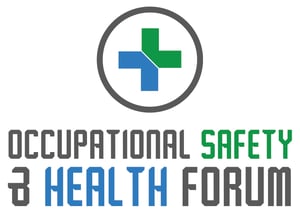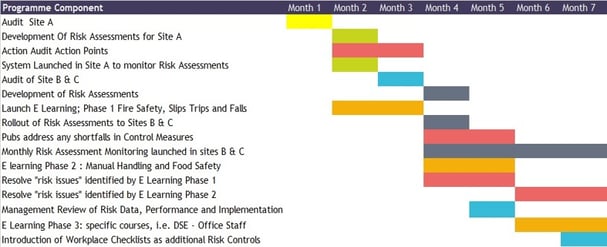As technology provides increasing connectivity and accessibility, increasingly businesses are moving away from manual, administratively-heavy management systems to cloud-based solutions to manage H&S in their organisation. |
 |
To get the best out of these solutions, it’s important to have an understanding of what you are looking to achieve and the potential challenges of a new system implementation. Your supplier should be supporting you through this to achieve a successful implementation.
What do you want to address?
5 Wishes
We ask clients; if money were no object what would they change tomorrow regarding the management of Health & Safety in the organisation. This helps us understand what your ideal solution looks like and so we can help you address these. Common goals include:
- Reporting and visibility of activity
- Accountability of tasks
- Claims defensibility
- Staff engagement
- Ease of administration
Understand the impact
The best systems in the world will have minimal benefit if they are not implemented correctly. The key here is to understand the current processes and documentation, and implement new systems at a pace the business can tolerate.
Who are the personalities involved?
|
What training and support will be needed? This is both for those who will run the system and those who will engage with it such as Supervisors. A critical part of the implementation process and it goes beyond initial orientation training and documentation (we use bespoke crib sheets) but the support through the initial weeks of the system. We consider this to be one of the most critical elements of the implementation. |
Getting the System to reflect the Business
If one of your drivers for the system is to create alignment between health and safety and the business, having a system that replicates the businesses organisational structure including the appropriate segregation of data, will be an important factor to generate performance data that drives accountability and visibility throughout the organisation.
| |
Management Information Requirements will differ, but if you are looking to blend a safety and performance culture this can be important. Different systems will deliver varying levels of data, from simple task management information to compliance performance data (e.g. this month you comply with 95% of the control measures in your risk assessments) and even data generated by employees about their own working environment (we do this via e Learning). MI will support the development of Safety KPI’s.
|
Mapping your existing documentation and controls
If you have a system that “works” then this is an important step to avoid any downtime which can lead to a loss of focus on safety management in the business.
It’s important to understand how current documentation will map across to a new system, what the priorities are and also what support is available from the supplier to work with you on this. These can then be factored into your game plan.
|
Formulate a game plan The key to this is bite-sized chunks. Any new systems a should be embedded in the business with minimal impact to business-as-usual operations. Once you have a good idea of what the implementation process will involve, it is time to make the implementation work for you. Collaborate with the software provider to develop a step-by-step plan for implementation. Make sure the systems providers understand your company’s needs and what you hope to accomplish. |
BCarm example implementation plan |
Who are BCarm?
We believe that risk management delivers more than just protection and compliance.
It can enhance operational effectiveness, create employee engagement and accountability, delivering improved business performance and competitive advantage.
Through a combination of cloud-based risk management systems, risk consultancy and engagement support we help businesses establish practical risk management in their business that can be operationalised alongside other business processes.




